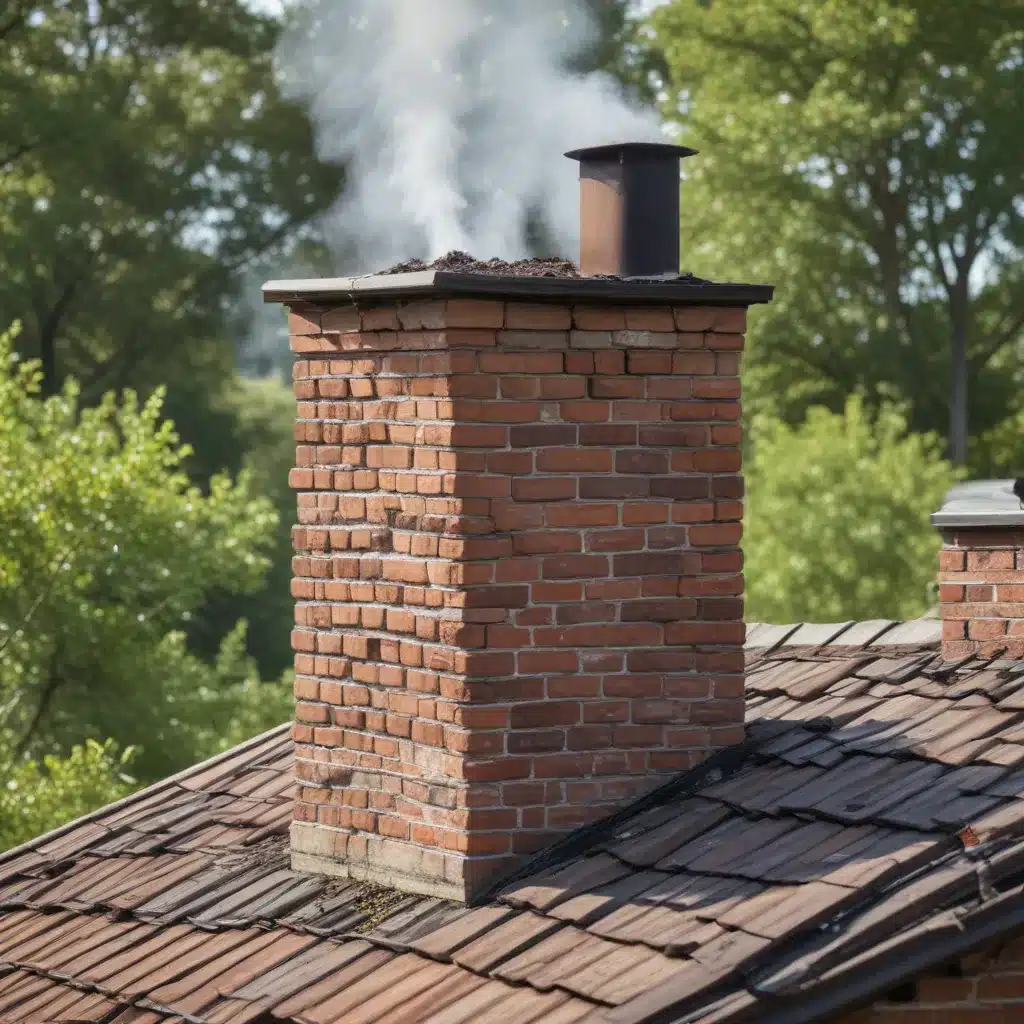
The Impact of Climate Change on Chimney and Fireplace Maintenance
As seasoned roofing professionals, we understand the importance of maintaining your chimney and fireplace to ensure they function efficiently and safely. However, the impact of climate change on these essential home features is often overlooked. Neglecting chimney repair can lead to increased emissions and pollution, posing potential fire and safety hazards.
It’s crucial to address these issues by maintaining your fireplace properly and using seasoned firewood to minimize environmental impact. Damaged chimneys contribute to increased pollution and a larger carbon footprint. When chimneys aren’t properly maintained, they release more smoke and dangerous gases like carbon monoxide into the atmosphere, lowering the air quality around homes significantly.
The combustion of wood in fireplaces is mainly responsible for this issue, as it releases pollutants into our environment. Taking proper care of your fireplace and chimney can reduce these emissions substantially. Annual inspections help identify problems early on, minimizing waste from wood-burning stoves and decreasing emissions that pollute the air.
Eco-Friendly Fireplace and Chimney Practices
To reduce the environmental impact of your fireplace and chimney, consider adopting the following eco-friendly practices:
Use Seasoned, Untreated Firewood
Burning untreated, seasoned firewood can significantly impact the environment and the air quality inside your home. Seasoned wood, which has been allowed to dry naturally, contains less moisture. Less moisture means the wood produces less smoke and fewer harmful emissions like fine particles when burned. This type of wood offers a cleaner burn, effectively reducing the accumulation of creosote within your chimney.
Creosote is a sticky substance that can lead to dangerous chimney fires if not cleaned out regularly. Burning trash or treated woods introduces chemicals into both your indoor air and the atmosphere at large, harming air quality and posing health risks. Opting for natural, dried firewood promotes safer and more efficient heating while also cutting down on pollution.
Maintain Your Fireplace and Chimney Properly
Properly using and maintaining your fireplace plays a key role in enhancing energy efficiency and improving indoor air quality. Reduce fireplace pollution by burning only seasoned firewood. Regularly clean and inspect your chimney to prevent creosote buildup and ensure proper ventilation. Invest in a chimney cap to keep out debris and animals while allowing for proper airflow. Make sure your fireplace is set up correctly to decrease indoor air pollution caused by harmful emissions. Refrain from burning garbage or treated wood, as these materials release toxic pollutants into the air.
Consider Eco-Friendly Heating Alternatives
Exploring alternative, eco-friendly options can significantly lessen the environmental impact of traditional fireplaces and stoves. Installation of a wood or pellet-burning stove insert can enhance efficiency, cut down on wood smoke pollution, and aid in fighting climate change. Additionally, considering sustainable choices for outdoor heating like chimineas fueled by recycled materials further helps in reducing carbon footprints.
Homeowners should also explore renewable energy sources like solar chimney technology and bioethanol as sustainable fuel options that save energy and combat poor air quality effectively. Furthermore, updated fireplace and stove practices with eco-friendly measures can remarkably reduce one’s carbon footprint at home while promoting cleaner air quality in the surrounding environment.
Reducing Your Carbon Footprint with Chimney and Fireplace Maintenance
Burning wood in fireplaces or stoves releases carbon dioxide (CO2), a significant greenhouse gas that contributes to climate change. This occurs when the wood burns and emits CO2, which then enters the atmosphere and helps trap heat, leading to global warming. Understanding the environmental impact of these emissions is crucial as it can help homeowners make informed decisions about their heating choices and consider alternative eco-friendly options to reduce their carbon footprint.
To advance clean energy projects, integrating solar chimney technology can improve environmental sustainability. Encouraging the adoption of eco-friendly fireplace and stove use contributes to reducing carbon emissions. Harnessing solar radiation, solar chimney technology improves energy efficiency by using the sun’s heat to create an updraft, potentially reducing energy bills by up to 50%. This eco-friendly approach limits greenhouse gas emissions and plays a crucial role in increasing solar energy supply.
Promoting eco-friendly fireplace and stove use by considering alternative heating options, such as heat pumps or electric fireplaces, can also be beneficial. These options are energy-efficient and reduce fuel consumption compared to traditional wood-burning stoves. Investing in a chimney liner can help improve the efficiency of your wood or natural gas fireplace, reducing carbon monoxide emissions and air pollution. Additionally, proper maintenance of your fireplace is crucial to ensuring clean indoor air quality and minimizing environmental impact.
By embracing these eco-friendly practices, you can actively combat climate change while enjoying the warmth of your home during colder months. The Roofers in Northampton team is here to provide expert guidance and support in maintaining your chimney and fireplace to ensure maximum efficiency, safety, and environmental sustainability.
Conclusion
The impact of climate change on chimney and fireplace maintenance is evident in the emissions from wood and gas combustion. To reduce pollution, it’s crucial to use untreated, seasoned firewood and ensure proper ventilation for your fireplace. Temperature changes can affect chimney condition, necessitating regular maintenance and repair to maintain safety and efficiency.
By adopting eco-friendly practices, homeowners can significantly reduce their carbon footprint and contribute to a greener, more sustainable future. From using seasoned firewood to exploring alternative heating options, there are numerous ways to make your chimney and fireplace more environmentally friendly. The Roofers in Northampton team is dedicated to providing the expertise and guidance you need to maintain your home’s heating systems while minimizing their impact on the environment.

